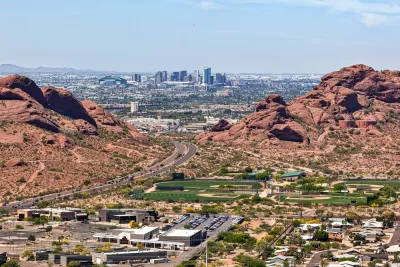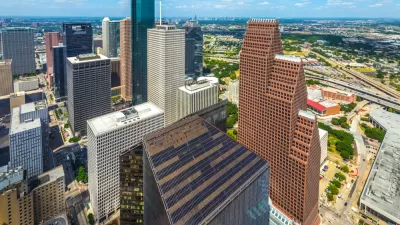The unique growth and challenges facing large cities in the U.S. Sun Belt will require a break from the kinds of policies generated to serve Northeastern and Midwestern cities over the course of U.S. history.

"That future can be seen now in the cities of the Urban Sun Belt — the 22 metropolitan statistical areas in the Sun Belt with a population of 1 million people or more," according to an article published by the Kinder Institute for Urban Research.
The article previews a new white paper from the Kinder Institute, titled "The Urban Sun Belt: An Overview," which "explores the interconnected opportunities and problems facing these large, young and quickly growing metro areas and how they differentiate them from the big cities of the Rust Belt and Coastal/Mountain regions of the U.S."
One of the prominent features of the biggest Sun Belt metropolitan areas is their quick growth, which includes quick growth in low-income populations. Meanwhile, affordability, a major selling point for many of these cities during the growth of recent decades, is slipping away.
For solutions to the challenges facing Sun Belt cities, the report suggests a new kind of urban policy, tailored to the unique qualities of those cities. "Many of the challenges facing the Urban Sun Belt are very specific to those metros. Making it more difficult to meet these challenges, according to the report, is the fact that most American urban policy is still crafted — and policy research is still conducted — with traditional Northeastern and Midwestern cities in mind," according to the article.
FULL STORY: Large, young and fast-growing Sun Belt metros need urban policy innovation

Study: Maui’s Plan to Convert Vacation Rentals to Long-Term Housing Could Cause Nearly $1 Billion Economic Loss
The plan would reduce visitor accommodation by 25,% resulting in 1,900 jobs lost.

Placekeeping: Setting a New Precedent for City Planners
How a preservation-based approach to redevelopment and urban design can prevent displacement and honor legacy communities.

Using Old Oil and Gas Wells for Green Energy Storage
Penn State researchers have found that repurposing abandoned oil and gas wells for geothermal-assisted compressed-air energy storage can boost efficiency, reduce environmental risks, and support clean energy and job transitions.

Washington State Plans Ambitious ‘Cycle Highway’ Network
The state is directing funding to close gaps in its existing bike network and make long-distance trips more accessible.

Homeowners Blame PG&E for Delays in ADU Permits
The utility says it has dramatically reduced its backlog, but applicants say they still face months-long delays for approvals for new electrical work.

Rethinking Wildfire Defense: How a Landscape Approach Can Protect Neighborhoods
Post-fire analysis of the Eaton Fire reveals that a landscape approach — including fire-resistant vegetation, home hardening, and strategic planning — can help reduce wildfire risk, challenging assumptions that trees and plants are primary fire hazards.
Urban Design for Planners 1: Software Tools
This six-course series explores essential urban design concepts using open source software and equips planners with the tools they need to participate fully in the urban design process.
Planning for Universal Design
Learn the tools for implementing Universal Design in planning regulations.
Borough of Carlisle
Caltrans
Heyer Gruel & Associates PA
Institute for Housing and Urban Development Studies (IHS)
City of Grandview
Harvard GSD Executive Education
Salt Lake City
NYU Wagner Graduate School of Public Service
City of Cambridge, Maryland




























